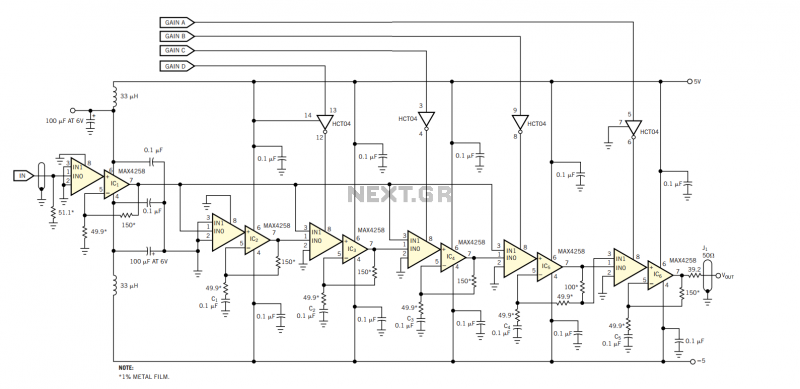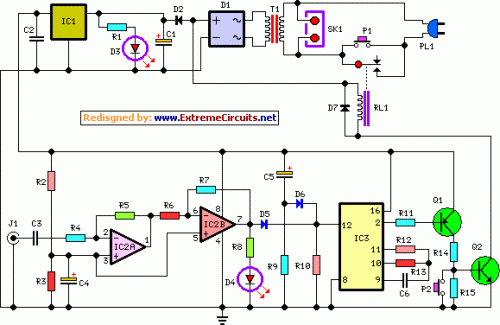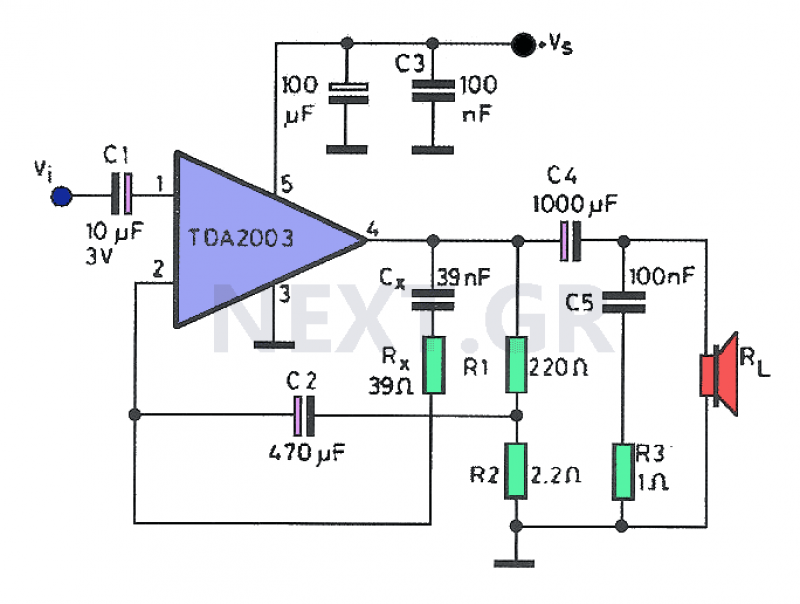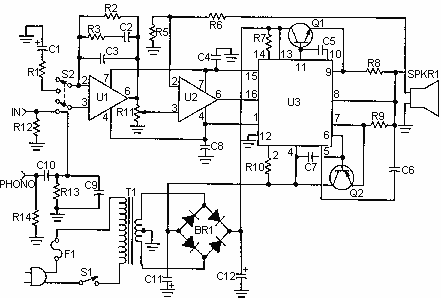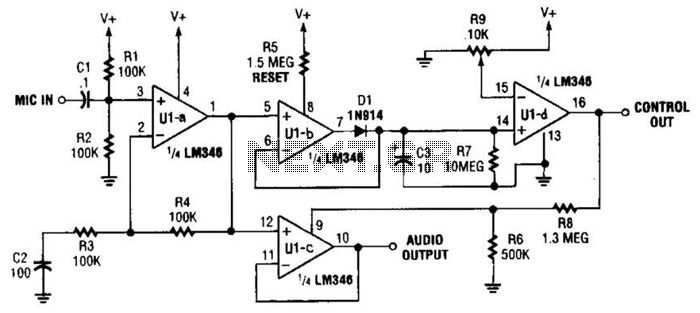
Full complementary symmetry amplifier CL
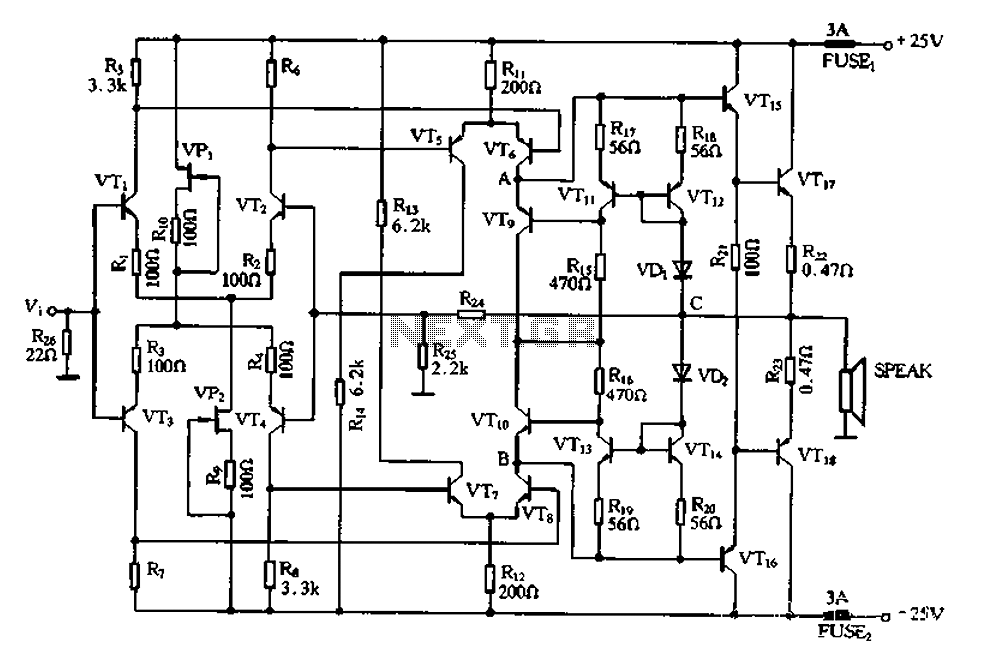
The CL type circuit is not a power amplifier output capacitance, feedback capacitance, or compensation capacitor amplifier circuit; it operates solely through a transistor (or FET) and a resistor. This circuit can generate feedback, and phase shift elements are omitted. Theoretically, this amplifier can handle any frequency of the input signal without discrimination, maintaining the integrity of the input signal during amplification. Figure 2-38 illustrates a full complement CL dual differential input amplifier circuit composed of transistors, FETs, and resistors. The full complementary differential circuit is formed by transistors VT1 to VT4 and constant current FETs VP1 and VP2, which constitute the input stage of the circuit. The FET constant current source is favored for its simple structure, lack of bias requirements, temperature stability, and high dynamic resistance characteristics, making it closely resemble an ideal constant current source. The differential voltage amplifier stage functions as a balanced amplifier circuit, composed of transistors VT5 to VT10. This configuration allows for a good match in volume levels between the differential circuit and the dual differential input stage circuit, optimizing the input stage for differential double-ended output. This significantly enhances the common mode rejection ratio and reduces distortion in the input stage. The differential circuit also generates strong DC negative feedback, ensuring a stable DC operating point across the circuit, which is essential for achieving high-quality audio performance. The balanced amplification principle states that during the positive half cycle of the signal, transistor VT6 and the lower input act as a constant current source load, resulting in a higher voltage gain for transistor VT8. Conversely, during the negative half cycle, VT8 and the lower input behave as a constant current source load, leading to a significant increase in voltage gain for VT6. This high-gain circuit exhibits minimal loss, allowing the output power tubes to deliver greater drive.
The CL type amplifier circuit described is a sophisticated design that leverages the properties of both bipolar junction transistors (BJTs) and field-effect transistors (FETs) to achieve high fidelity audio amplification. The circuit's architecture is structured to minimize distortion while maximizing the common mode rejection ratio, which is crucial for maintaining signal integrity in audio applications. The use of complementary transistors ensures that both halves of the input signal are amplified symmetrically, which is vital for producing a balanced output.
The input stage's configuration, with FETs serving as constant current sources, enhances the linearity of the amplifier, allowing for a faithful reproduction of the input signal across a wide frequency range. This is particularly important in audio applications where signal fidelity is paramount. The feedback mechanism incorporated into the design further stabilizes the amplifier's operating point, ensuring consistent performance regardless of variations in input signal levels or environmental conditions.
Moreover, the differential input stage is designed to reject common mode signals, which are often noise and interference picked up from the environment. This is achieved through the balanced nature of the circuit, where any noise present on both input lines is effectively cancelled out in the output. The overall result is an amplifier that not only provides high gain but also maintains excellent sound quality with minimal distortion, making it suitable for high-end audio systems and professional sound reinforcement applications.
In conclusion, the CL type amplifier circuit exemplifies advanced engineering principles in electronics, focusing on efficiency, stability, and sound quality. Its design is a testament to the effectiveness of using complementary components in achieving superior audio amplification. CL type neither is a power amplifier output capacitance and feedback capacitance nor compensation capacitor amplifier circuit, all-electric road only by the transistor (or FET) and resistor. Circuit capable of generating feedback, phase shift elements are removed. From theory, this amplifier is capable of everything, without discrimination, the frequency of the input signal amplification. That is the input signal amplification in addition to outside, without any form of change. Figure 2-38 is a composed of a transistor, FET and resistor composed of a full complement of CL dual differential input amplifier circuit path.
Full complementary differential circuit by the transistor VTi ~ VT4 composition and constant FET VPi, VP2 were composed of the source, it constitutes the input stage of the circuit. FET constant current source because of its simple structure, without bias, temperature stability and higher dynamic resistance characteristics, closer to the ideal constant current source.
Using differential voltage amplifier stage balanced amplifier circuit, which consists of VTs ~ VTio composition, as the volume level of the differential circuit and dual differential input stage circuit can achieve a good match, so the best circuit in the input stage differential double-ended output state, It can greatly improve the common mode rejection ratio, and reduce the input stage of this two-stage distortion o while the differential circuit will produce a strong dc negative feedback, so that the DC operating point of the whole circuit is very stable at all levels, which is to get pretty the basic sound bar member. Balanced amplification principle is: When the positive half cycle of the signal when, VT6 and lower input is equivalent to a constant current source load, so VT8 voltage gain higher than the resistance load twelve o When the signal magnitude of the negative half cycle, VT8 and lower input is equivalent to a constant current source load, the voltage gain is increased so VT6 twelve orders of magnitude.
This high gain circuit loss really small, making the output power tubes to give greater impetus.
The CL type amplifier circuit described is a sophisticated design that leverages the properties of both bipolar junction transistors (BJTs) and field-effect transistors (FETs) to achieve high fidelity audio amplification. The circuit's architecture is structured to minimize distortion while maximizing the common mode rejection ratio, which is crucial for maintaining signal integrity in audio applications. The use of complementary transistors ensures that both halves of the input signal are amplified symmetrically, which is vital for producing a balanced output.
The input stage's configuration, with FETs serving as constant current sources, enhances the linearity of the amplifier, allowing for a faithful reproduction of the input signal across a wide frequency range. This is particularly important in audio applications where signal fidelity is paramount. The feedback mechanism incorporated into the design further stabilizes the amplifier's operating point, ensuring consistent performance regardless of variations in input signal levels or environmental conditions.
Moreover, the differential input stage is designed to reject common mode signals, which are often noise and interference picked up from the environment. This is achieved through the balanced nature of the circuit, where any noise present on both input lines is effectively cancelled out in the output. The overall result is an amplifier that not only provides high gain but also maintains excellent sound quality with minimal distortion, making it suitable for high-end audio systems and professional sound reinforcement applications.
In conclusion, the CL type amplifier circuit exemplifies advanced engineering principles in electronics, focusing on efficiency, stability, and sound quality. Its design is a testament to the effectiveness of using complementary components in achieving superior audio amplification. CL type neither is a power amplifier output capacitance and feedback capacitance nor compensation capacitor amplifier circuit, all-electric road only by the transistor (or FET) and resistor. Circuit capable of generating feedback, phase shift elements are removed. From theory, this amplifier is capable of everything, without discrimination, the frequency of the input signal amplification. That is the input signal amplification in addition to outside, without any form of change. Figure 2-38 is a composed of a transistor, FET and resistor composed of a full complement of CL dual differential input amplifier circuit path.
Full complementary differential circuit by the transistor VTi ~ VT4 composition and constant FET VPi, VP2 were composed of the source, it constitutes the input stage of the circuit. FET constant current source because of its simple structure, without bias, temperature stability and higher dynamic resistance characteristics, closer to the ideal constant current source.
Using differential voltage amplifier stage balanced amplifier circuit, which consists of VTs ~ VTio composition, as the volume level of the differential circuit and dual differential input stage circuit can achieve a good match, so the best circuit in the input stage differential double-ended output state, It can greatly improve the common mode rejection ratio, and reduce the input stage of this two-stage distortion o while the differential circuit will produce a strong dc negative feedback, so that the DC operating point of the whole circuit is very stable at all levels, which is to get pretty the basic sound bar member. Balanced amplification principle is: When the positive half cycle of the signal when, VT6 and lower input is equivalent to a constant current source load, so VT8 voltage gain higher than the resistance load twelve o When the signal magnitude of the negative half cycle, VT8 and lower input is equivalent to a constant current source load, the voltage gain is increased so VT6 twelve orders of magnitude.
This high gain circuit loss really small, making the output power tubes to give greater impetus.
